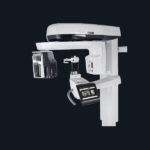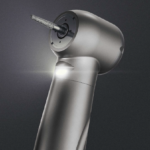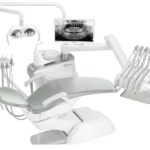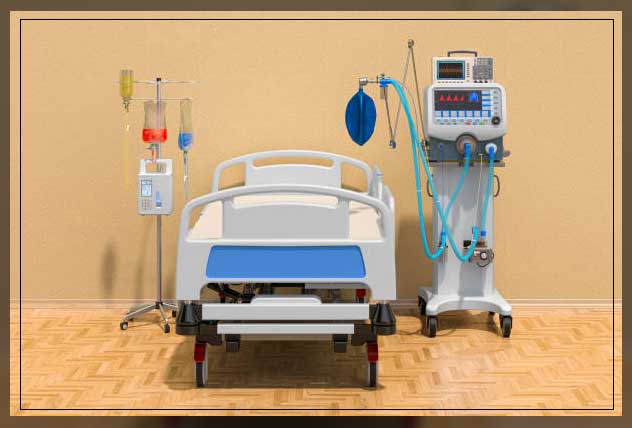
A Ventilator Machine is medical equipment that helps the lungs of the patient to work while in critical care and intensive care unit.
It can also be a life-saving machine if the condition of the patient makes it hard for them to breathe properly or when they are unable to breathe on their own at all.
Moreover, a ventilator machine helps to push air in and out of the lungs so that the body of the patient can get the oxygen it needs.
They can wear a fitted mask to help get oxygen from the ventilator into the lungs.
Or if the condition is more seriuos, a breathing tube can be inserted down the throat of the patient to supply the lungs with oxygen.
In a hospital setting, ventilators are common and a doctor or a respiratory therapist will control how much oxygen a patient needs.
Other names for ventilator machines are respirators, breathing machines, and mechanical ventilation.
Keep on reading.
Why do Patients need a Ventilator Machine?
When a patient is unable to breathe properly on their own, it is respiratory failure and is a life-threatening emergency.
If the brain, heart, liver, kidneys, and other organs do not get enough oxygen, they are unable to function as they should.
Thus, a ventilator machine can help patients to get the oxygen they need for the organs to function.
Health Conditions
A number of different types of health conditions can cause patients to have difficulty breathing.
These include:
- acute respiratory distress syndrome, ARDS
- chronic obstructive pulmonary disease, COPD
- asthma
- brain injury
- cardiac arrest
- pneumonia
- collapsed lung
- coma or loss of consciousness
- drug overdose
- hypercapnic respiratory failure
- lung infection

Moreover, conditions like myasthenia gravis, sepsis, upper spinal cord injuries, premature lung development in babies, Guillain-Barre syndrome, and amyotrophic lateral sclerosis or Lou Gehrig’s disease are conditions that will need assistance.
COVID-19 and Ventilators
It is important to note that a number of doctors and healthcare professionals make use of ventilator forces with patients diagnosed with COVID-19.
Mechanical ventilation is only for the most severe cases where fluid fills the lungs, making breathing difficult.
The majority of people with COVID-19 experience mild or moderate symptoms.
Surgery and Ventilator Machine
In case the surgeon surgeons use general anesthesia for surgical procedures, the patient may need to be on a ventilator while they are asleep.
This is because some anesthesia drugs can make it difficult for patients to breathe properly on their own while they are in a sleep-like state.
Moreover, with surgery, they may need to be on a ventilator for a period of time as follows:
During Surgery: A ventilator can temporarily do the breathing for the patient while the patient general genral anesthesia.
Recovering from Surgery: In some cases, for complicated surgeries, a patient may need a ventilator to help them breathe for hours or longer after surgery.
Learn more about Types of Hospital Beds here.
How long does a Patient need to be on Ventilator?
The length of time a patient will be on a ventilator machine depends on the reason they need help breathing.
If they need a ventilator during surgery, they will often be on a machine while they are in a sleep-like state.
This can range from less than an hour to a number of hours or more.
In case they need a ventilator for a health condition, they may need to be on it for hours, days, weeks, or longer.
Moreover, it depends on how long it takes for their lungs to get stronger and be able to function properly on their own.
It is important to note that the ventilator machine will not cure an illness.
The job of this machine is to keep the patient breathing while the body fights off an infection or illness or recovers from an injury.
For instance, according to a study, the typical duration of mechanical ventilation for patients with severe COVID-19 symptoms is about 8 to 10 days.
Learn more about Medical Items: Guide here.
Working of a Ventilator Machine
A mechanical ventilator uses pressure to blow oxygenated air into the airway of the patient and remove carbon dioxide from the body.
The airway includes:
- nose
- mouth
- throat or pharynx

- voice box or larynx
- windpipe or trachea
- lung tubes or bronchi
Oxygen from the ventilator may be pushed into the lungs in one or two ways: with a fitted mask or with a breathing tube.
Let’s discuss them as follows:
Use of Ventilator with a Face Mask
The use of a face mask to get oxygen into the lungs of the patient is Non-Invasive Ventilation.
With this type of ventilation, the doctor or healthcare professional will use a fitted mask over the nose and mouth of the patient.
Moreover, a tube that connects the face mask to the ventilator helps to push air into the lungs of the patient.
With the help of this method, breathing issues tend to be less severe.
There are a number of benefits to this method of ventilation, like:
- it is more comfortable than a breathing tube that goes down the throat of the patient
- does not require sedation
- allows the patient to talk, swallow, and cough
- lowers the risk of side effects and complications like infection and pneumonia, which are more common with breathing tube ventilation
Learn more about Face Masks: Guide here.
Use of Ventilator with a Breathing Tube
In the case of more severe cases, the patient will need a breathing tube that the doctor will insert into the throat of the patient and down the windpipe.
This is known as Invasive Ventilation.
During this type, the doctor will sedate the patient before the procedure, as it can cause pain and discomfort.
Moreover, the breathing tube that the doctor will insert into the windpipe of the patient connects to a ventilator that forces air into the airways of the body.
This will help the patient to get the oxygen they need while healing from an illness or injury.
If the patient is on a ventilator for an extended period of time, they may need a tracheostomy.
This procedure involves a surgeon making a hole in the front of the neck of the patient.
They will then insert a tube into the trachea, below the vocal cords and then connect it to a ventilator.
Furthermore, a tracheostomy can help to wean the patient off a ventilator when they have been on it for a long term.
Learn more about Medical Supplies Dubai here.
What to Expect on a Ventilator Machine
When a patient is on a ventilator, when conscious, they can be uncomfortable, especially if they are on a ventilator that has a breathing tube down the throat.
They will be unable to talk, eat, or move around while they are connected to the ventilator.
However, if the patient is on a ventilator with a face mask, they will more likely to be able to talk, swallow, and cough.
Medication
The doctor will give medication to the patient that will help them to relax and comfortable while they are on a ventilator.
This will help to make being on a ventilator less traumatic.
Moreover, medications that doctors will give to the patient while on a ventilator are:
- pain medications
- sedatives
- muscle relaxers
- sleep medications
These drugs tend to cause drowsiness and confusion.
Furthermore, these effects will wear off once the patient stops taking them and they no longer need medications once they stop using the machine.
How will the Doctor Monitor the Patient?
If a patient is on a ventilator, the patient will likely need other medical equipment that monitors how the patient is doing overall.
The pateint will need montiors for:
- heart rate
- blood pressure
- respiratory rate or breathing
- oxygen saturation
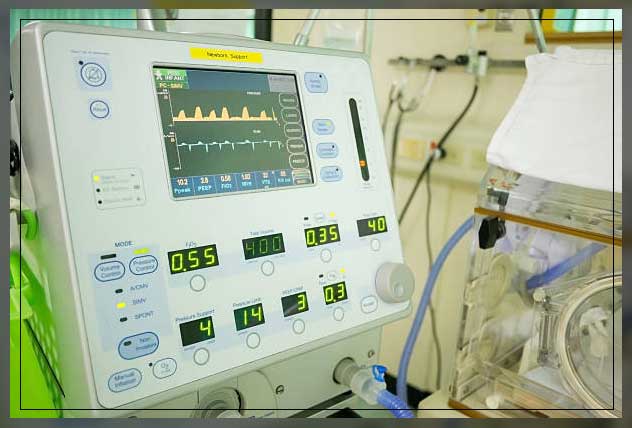
Moreover, the patient may also need regular chest X-rays or scans.
Additionally, the patient may also need blood tests that help to check how much oxygen and carbon dioxide is present in the blood of the patient.
Learn more about Medical Diagnostic Imaging here.
Possible Risks of using a Ventilator Machine
Though a ventilator can help save the life of a patient.
However, like other treatments, it can also cause potential side effects which are more common if the patient is on a ventilator for a longer period of time.
Some of these common risks are:
Infection
This is one of the main risks of being on a ventilator with a breathing tube.
Fluid and mucus build-up in the throat and windpipe can allow germs to accumulate on the breathing tube.
Moreover, these germs can travel into the lungs of the patient and can raise the risk of developing pneumonia.
Also, sinus infections are common with a breathing tube and the patient will need antibiotics to treat pneumonia or sinus infections.
Irritation
The breathing tube can rub against and irritate the throat or lungs.
It can also make it hard to cough. Coughing helps to get rid of dust and irritants in the lungs of the patients.
Vocal Cord Issues
As the breathing tube passes through the voice box or larynx of the patient which contains vocal cords, makes them unable to talk or speak.
Furthermore, the breathing tube can damage the voice box.
Pulmonary Edema
The air sacs in the lungs of the patient can get filled up with fluid.
Blood Clots
Lying in the same position for a long time can increase the risk of forming blood clots
Sedation-related Delirium
This can occur due to the use of sedatives and a number of other medications that the doctor will give to the patient who is on the ventilator with a breathing tube.
Other Risks
While some other risks are:
Impairment of Nerves and Muscles
Lying still for a number of days, being on sedation, and not breathing on their own can result in disorders of the nerves and muscles of the patients.
Fluid Overload
This can occur due to continuous infections, drug toxicity, and renal failure
Lung Injury
A ventilator can cause lung damage.
This can occur due to a number of reasons like:
- too much air pressure in the lung
- air leaks into the space between the lungs and the chest wall or pneumothorax
- oxygen toxicity, i.e. too much oxygen in the lungs
What to Expect when taking off the Ventilator Machine?
If a patient has been on the ventilator for a long time, they may have difficulty breathing on their own once the ventilator is not breathing for them.
Moreover, they may find to have a sore throat or aching, weak chest muscles when the doctor takes off the ventilator.
This can happen because the muscles around the chest tend to get weaker while the ventilator is doing the work of breathing for the patient.
The medications a patient will receive while on the ventilator may also contribute to weakened muscles.
In some cases, it can take days or weeks for the lungs and chest muscles to get back to normal.
The doctor can recommend slowing weaning off the patient from a ventilator.
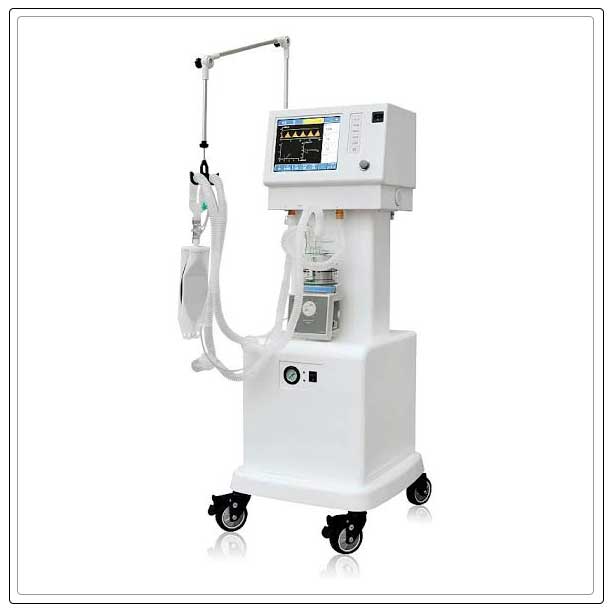
This means that the doctor will not take the ventilator off the patient completely.
Instead, they will take it off gradually until the lungs of the patient are strong enough to breathe on their own without any help from the ventilator.
In case the patients have pneumonia or another infection from the ventilator, they may feel weak after they are off the ventilator.
Also, when a patient is on the ventilator for a longer period of time, the number of muscles in the body will be a lot weaker than before.
It can be hard to move around with ease and do the usual activities, thus, the patient will need physical therapy to regain muscle strength.
Final Thoughts
A ventilator machine is medical equipment that helps to keep the lungs of the patient working. They cannot treat or fix a health problem, however, they can do breathing work for the patient while they get treatment or recover from an illness or health condition.
Ventilators can be life-saving and an important part of treatment support for people of all ages, including children and babies. How long a patient needs to use a ventilator depends on the help for breathing or how long it takes for the underlying condition to be treated.
While some patients may need a ventilator for only a few hours or less, others may need it for days, weeks, or longer. The doctor can help decide whether using a ventilator is best for the patients and their health or not.


